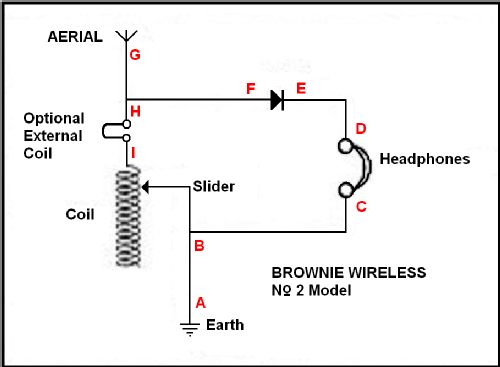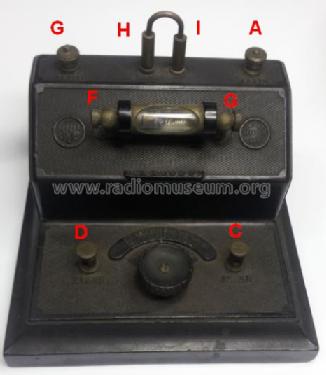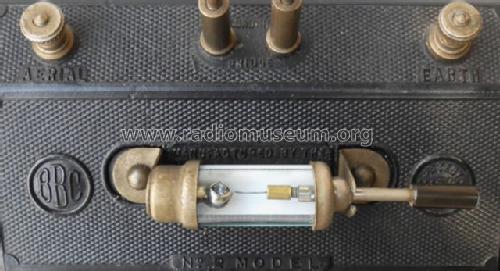Crystal Receiver No. 2
Brownie (Brand), J.W.B. Wireless Co. & Brownie Wireless Co. (of Gt. Britain), Ltd.; London
- Country
- Great Britain (UK)
- Manufacturer / Brand
- Brownie (Brand), J.W.B. Wireless Co. & Brownie Wireless Co. (of Gt. Britain), Ltd.; London
- Year
- 1925
- Category
- Detector-Radio (Crystal or diode, without tubes/transistors)
- Radiomuseum.org ID
- 70541
Click on the schematic thumbnail to request the schematic as a free document.
- Main principle
- Crystal or Solid State Detector
- Wave bands
- Broadcast (MW) and Long Wave.
- Power type and voltage
- No Power needed
- Loudspeaker
- - For headphones or amp.
- Material
- Bakelite case
- from Radiomuseum.org
- Model: Crystal Receiver No. 2 - Brownie Brand, J.W.B. Wireless
- Dimensions (WHD)
- 5.7 x 4 x 6.2 inch / 145 x 102 x 157 mm
- Notes
-
Brownie 2;
Plug-in coil for Daventry 5XX on 1600 metres. moulded Ebonite base, Nickel plated fittingsPrice in 1927, complete with semi-opal glass protected Detector, DL.5 crystal and Pallmadium Cat whisker: 10s 6d.
- Net weight (2.2 lb = 1 kg)
- 0.765 kg / 1 lb 11 oz (1.685 lb)
- Mentioned in
- Radio! Radio!
- Literature/Schematics (1)
- Tickling the Crystal; Sanders
- Literature/Schematics (2)
- RADIOBOTE, Österr. (Heft 34/2011, S.6 ff, Gerätebeschreibung)
- Author
- Model page created by Konrad Birkner † 12.08.2014. See "Data change" for further contributors.
- Other Models
-
Here you find 12 models, 12 with images and 1 with schematics for wireless sets etc. In French: TSF for Télégraphie sans fil.
All listed radios etc. from Brownie (Brand), J.W.B. Wireless Co. & Brownie Wireless Co. (of Gt. Britain), Ltd.; London
Collections
The model Crystal Receiver is part of the collections of the following members.
Forum contributions about this model: Brownie Brand, J.W.B: Crystal Receiver No. 2
Threads: 1 | Posts: 1
Der Brownie Typ 2 wurde wie eine Reihe anderer Geräte am 1.Sept.1925 eingeführt, um de neuen Langwellensender zu empfangen:
Am 6.Jan. begann Chelmsford 5XX mit einem Alternativprogramm zu den örtlichen Mittelwellenprogrammen. Zunächst nur Dienstag, Donnerstag und Samstag. An den anderen Tagen (Mo, Mi, Fr, So) wurde das Londoner 2LO-Programm gesendet.
Die LW-Versuche in Chelmsford waren so erfolgreich, dass ein neuer 25 kW-Sender errichtet wurde in Daventry, Northhamptonshire, der Chelmsford ablöste und als 5XX am 27.Juli 1925 seinen Dienst auf 1600 m aufnahm.
Damit war es nötig geworden, Geräte dafür anzubieten. Die Leute wollten ein zweites Programm.
Die Zeitzeichen z.B. vom Eiffelturmsender waren zu dieser Zeit kaum mehr interessant. Vor der Einführung des Rundfunks 1922 war das anders: da war der "Amateur" stolz auf jeden Empfang.
Konrad Birkner † 12.08.2014, 23.Jul.11






























